M107, Globular Cluster
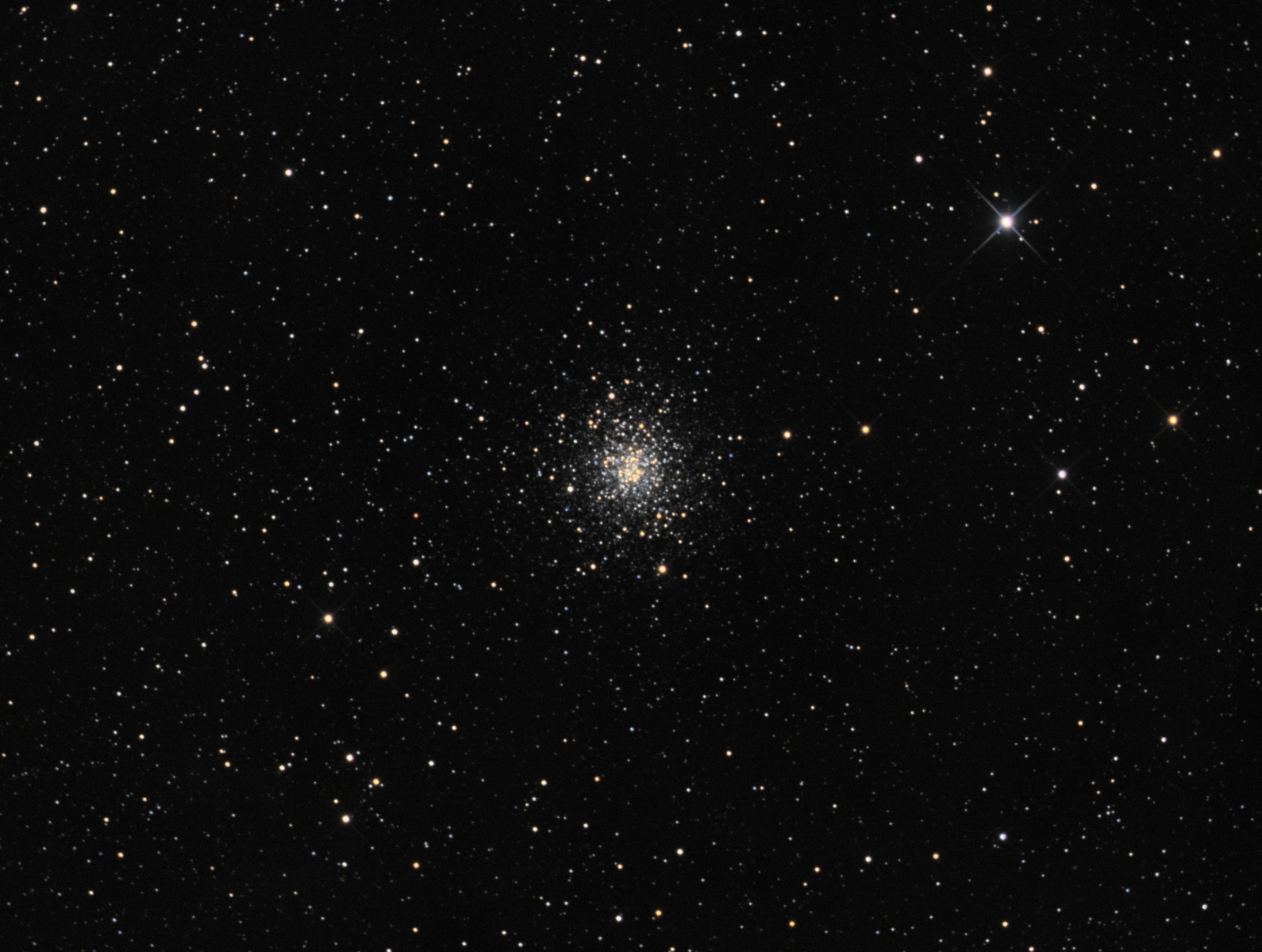 Click image for full size version
Click image for full size version
May 25, 2015, published in Astronomy Magazine, October 2015
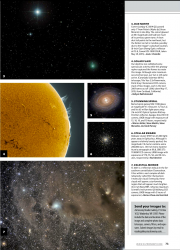 Compared to NGC5053, M107 is brighter, denser and “splashier.” Even so, it is still considered a relatively loosely-packed globular, compared to some of its better known cousins like M3 and M13. It lies in southern Ophiuchus at a distance of around 21,000 light years, and contains about 200,000 stars. This was the last globular cluster to be added to the Messier catalogue (added by Helen Sawyer Hogg in 1947). Globular clusters, as a group, are great in telescopes of all sizes, and the bigger the scope the more stars can be seen. They give the impression of a pile of diamond dust spilled on a black tablecloth. Beautiful.
Compared to NGC5053, M107 is brighter, denser and “splashier.” Even so, it is still considered a relatively loosely-packed globular, compared to some of its better known cousins like M3 and M13. It lies in southern Ophiuchus at a distance of around 21,000 light years, and contains about 200,000 stars. This was the last globular cluster to be added to the Messier catalogue (added by Helen Sawyer Hogg in 1947). Globular clusters, as a group, are great in telescopes of all sizes, and the bigger the scope the more stars can be seen. They give the impression of a pile of diamond dust spilled on a black tablecloth. Beautiful.
Tekkies:
SBIG STL-11000M camera, Baader LRGB filters, 10″ f/6.8 ASA astrograph, Paramount MX. Guided with STL-11000’s external guider and 80 mm f/6 Stellar-Vue refractor. Acquisition and guiding with Maxim-DL. Focusing with FocusMax. Automation with CCDCommander. Calibration, cosmetic correction, registration, integration and all processing in PixInsight. Shot from my SkyShed in Guelph, Ontario. No moon, good to very good transparency and fair to average seeing throughout acquisition.
11x5m R, 10x5m G, 10x5m B and 17x10m L unbinned frames (total=5hr25m).
RGB:
Creation and cleanup: R, G and B masters were cropped and combined to make an RGB image which was processed with DBE and ColourCalibration.
Stretching: HistogramTransformation was applied to make a pleasing yet bright image. TGV Noise was applied and the image was re-stretched to reset the black point.
Synthetic Luminance:
Creation and cleanup: The cropped L, R,G and B masters were combined using the ImageIntegration tool (average, additive with scaling, noise evaluation, iterative K-sigma / biweight midvariance, no pixel rejection). DBE was applied to neutralize the background.
Deconvolution: A copy of the image was stretched to use as a deconvolution mask. A star mask was made from unstretched L to use as a local deringing support. Deconvolution was applied (50 iterations, regularized Richardson-Lucy, external PSF made using DynamicPSF tool with about 20 stars; local deringing at 70% and no global deringing).
Stretching: HistogramTransformation was applied to make a pleasing yet bright image. TGV Noise was applied and the image was re-stretched to reset the black point.
Combining SynthL with RGB:
The luminance channel of the RGB was extracted, processed and then added back into the RGB image as follows:
1. Apply RGBWorkingSpace to RGB image to set all channels equal.
2. Extract luminance from the RGB image.
3. Apply LinearFit using the SynthL channel as a reference.
4. Use ChannelCombination in Lab mode to replace the RGB’s luminance with the fitted luminance from step 2.
5. LRGBCombine was then used to make a SynthLRGB image.
Final Processing
A star core mask was made by applying morphological transformation and convolution to a copy of SynthL. Colour saturation in star cores was increased using this mask. Colour saturation of the background was decreased using the same mask, inverted. A mild unsharp mask was applied to the core of the globular cluster. The Masked Stretch script was used to darken the background. Contrast was increased slightly with the Curves tool.
Image scale is about 1.1 arcsec per pixel for this camera / telescope combination.

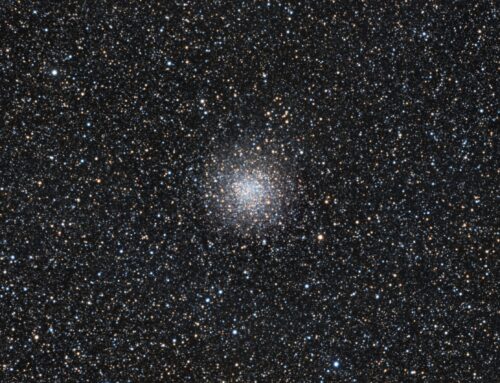
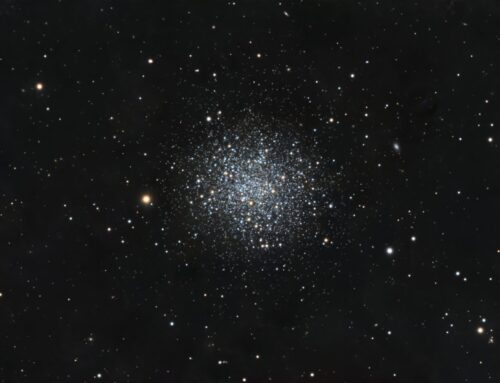
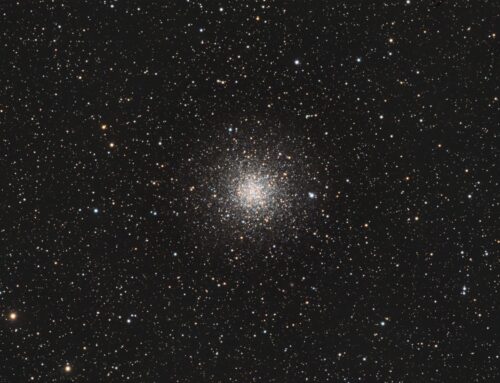
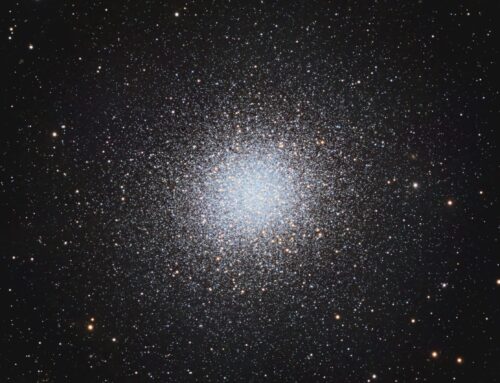
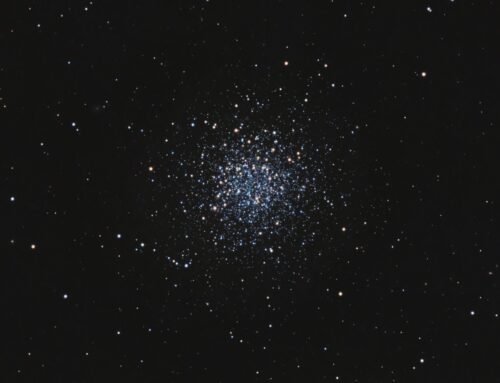
These faint Globulars are interesting – if not that exciting – as they can be very old indeed. There is also a virtually inexhaustible supply! This is becoming a nice series.
Regards,
Mark